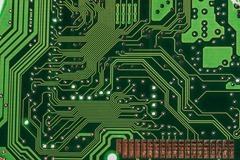Z370 motherboards offer a faster trouble-free build experience with more features and higher power. If you plan to use Intel’s new Coffee Lake processors, you’ll need to have a Z370 motherboard. The processors cannot be used together with the previous generation boards as those generation processors won’t work with the new motherboards. Even though these processors use the LGA 1151 socket, the new processors need more power.
Intel’s new 8th Generation Coffee Lake processors come with 4 cores for i3, 6 cores for the i5 and i7 CPUs, higher Turbo Speeds, a 2666Mhz support for i5 and i7 and a 2400 MHz support for the i3, and a 50Mhz increase in the integrated graphics card clock speed.
With that said, here are 4 things you should know about Z370 motherboards:
1. The Z370 Chipset Isn’t So Different From The Z270 Chipset
The Z370 chipset is much similar to the Z270 chipset. The connectivity, the supported number of PCIe 3.0 lanes, the controller support, and the available bifurcation are all the same with only a new name to allow easy identification of new motherboards which support the Intel 8 Generation processors.
From the chipset, there are 20-24 PCIe 3.0 lanes, 14 USB ports which are either 2.0 or 3.0 and a maximum of up to 10 USB 3.0, 6 SATA 6 Gbps ports that support RAID 0/1/5/10, network controllers support, Thunderbolt 3 support, and Intel Optane memory support for a boot drive.
2. The CPU Has More Pins
The new generation processors will only work in Z370 motherboards owing to the way the pins are arranged. More pins have been converted from the RSVD to VCC and VSS in the new CPUs. There are 14 more ground pins and 18 more power pins which a small rearrangement in the way the pins are provided.
The physical socket is similar to the last platform. Both of them use LGA1151. The processors have the same notches in the packages.
3. There HDCP2.2 Is Being Supported
There are a few differences on each platform’s capabilities. The new processors support HDCP2.2 both in HDMI and DP even through an LSPCon will still be needed for an HDMI 2.0. The video outputs have 3 supported display pipes which motherboard manufacturers can configure to their liking.
4. There Is Increased Memory Support
There is an increased memory support for chips that have a base design with at least 6 cores. In both the single DIMM per channel and the dual DIMMs per channel, that is, 1DPC and 2DPC, DDR4-2666 is being supported by Intel. It is supporting only DDR4-2400 for both the 1DPC and 2DPC mode. This is both the dual and single rank memory.
The AIO designs, however, require SODIMM memory. In these parts, both the hex-core and quad-core, Intel supports DDR4-2133 at 1DPC and DDR4-2400 AT 1DPC. The support of LPDDR3 has been entirely dropped off. The reason for this is because the motherboards run their traces chained between memory slots as opposed to a T-Topology that aids with timing synchronization.
Conclusion
The Z370 motherboards are a great improvement and a must have. Need to buy one? Here’s our recommendation for The Best z370 Motherboards.

